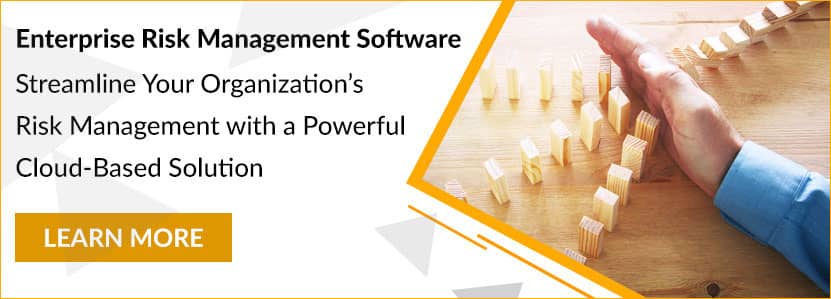Home/ Blog / Assessing Vendor Risks in a Digital Age
Best practices for vendor risk assessments can be challenging to adopt if the risk management program in an organization is based on manual data aggregation and reporting methods. Capturing, processing, and evaluating the data associated with these best practices can become difficult once systems exceed a few dozen vendors and nearly impossible once programs exceed a few hundred.
The right approach is to use automation to speed up the third-party risk management process. Modern risk management platforms provide many tools and workflows that can help throughout the entire vendor lifecycle. Modern risk management systems help businesses choose the right vendor, assess all vendor risks, onboard the vendor, monitor the vendor’s performance, and offload any vendor that is not performing adequately.

Benefits of Automating Third-Party Risk Management
Automating vendor risk assessment has numerous benefits for both the vendor risk management team and the business. Three primary advantages are as follows:
Increased Efficiency
By automating vendor risk evaluations via a technological platform, workflows are entirely transformed. Time spent transmitting, tracking, pursuing, and manipulating data is considerably reduced, allowing vendor risk management teams to concentrate their efforts on analysis and more strategic outcomes.
Increased Agility
Technology accelerates the vendor risk assessment process and also makes sharing the resulting data more accessible and faster. Organizations may identify much more quickly whether a vendor partnership is compliant and accelerate onboarding processes. This improvement increases the organization’s agility, resulting in increased operational resilience and the ability to capitalize on new opportunities.
Improved Decision-Making
When vendor risk assessment data is collected, processed, and reported using vendor risk assessment software, executives can have greater confidence in the quality of the data on which they are basing their judgments. Data governance is facilitated, data quality is improved, and the data’s path is auditable. As a result, corporate confidence in and utilization of risk assessment data will grow.
Automation benefits the vendor risk management team, the business, senior management, and the board of directors. Stakeholders have the information they require to make confident business decisions, resulting in increased company value.
Automating Risk Assessment Workflows
Third-party risk specialists make decisions without the use of automation. They frequently collect data in spreadsheets and manually examine it. Due to the magnitude of third-party interactions and accompanying data, however, most larger organizations incorporate some degree of automation.
Automating vendor risk assessment has numerous benefits for both the vendor risk management team and the business. Share on XCentralized Vendor Database
Having a single database including all of the suppliers with whom the organization works and the data associated with them establishes a trusted source of data for the entire organization. Almost 50% of organizations do not yet have a comprehensive inventory of all third parties.
Managed Evaluations
The vendor risk assessment questionnaire should be well-structured and have question sets that adhere to best practices. Additionally, the vendor risk assessment templates should be reasonably stable over time, allowing for the development and tracking of high-quality indicators and the accumulation of trend data.
Vendor Role Assessments
Determine the vendor’s relationship with the business, including the relationship’s strategic aim, its criticality to the business, the operations it will perform, the IT systems and data involved, and the impact of a vendor issue on the organization. It is essential to rank the criticality of each vendor to the business and act accordingly. If a vendor provides a service only used by employees and does not affect the business or its clients, then the vendor is a low priority. Any vendor that can directly affect the business process and operational efficiency will be a higher priority when it comes to monitoring and assessments.
Asking the Right Questions
Risk assessments of vendors should be performed at the product and service level. For instance, if the vendor connection contains customer personal data, assessments of data privacy risk, information technology risk, and cyber risk should be included. Vendor risk assessments should also include a broader range of hazards, including financial viability.
Continuous Assessments
It is not enough to assess the vendor one time – it is important to continuously monitor vendor performance and periodically assess each vendor that works with the organization. The data that is collected in each assessment helps in data analytics.
Keys to Third Party Risk Management Automation
Automating vendor risk assessment has numerous benefits for both the vendor risk management team and the business. There are three main strategic keys that can help a business enhance its risk management framework for third parties:
Data Collection
Data is the foundation of any modern risk management framework. It is important to collect data from vendors and about vendor performance from within the organization. Collecting and storing the data can be difficult under manual systems, but automation can make it much easier. Modern risk management platforms automatically collect and analyze data throughout the enterprise, providing a great foundation for data analytics, trends, forecasting, and more.
Risk Mapping
It is critical for businesses to understand the risk exposure of each vendor relationship within the organization. Some vendors provide supplementary services that benefit the employees – such vendors are not increasing the risk in many business processes. However, vendors such as Fintech partners are embedded deep within the bank’s business processes. It is critical that the organization understands how vendor risk will interact with different processes to put the right controls in place.
Predictive Analytics
To summarize, automating vendor risk assessments with third-party risk management software can significantly improve the vendor onboarding process, offer the organization improved risk management data to enable improved decision-making, and increase the business’s agility. By automating best practices and incorporating AI as programs grow, businesses may better align vendor relationships with overall strategy, thereby assisting them in meeting their objectives.
Request a Demo
Complete the form below and our business team will be in touch to schedule a product demo.
By clicking ‘SUBMIT’ you agree to our Privacy Policy.




